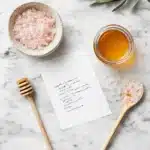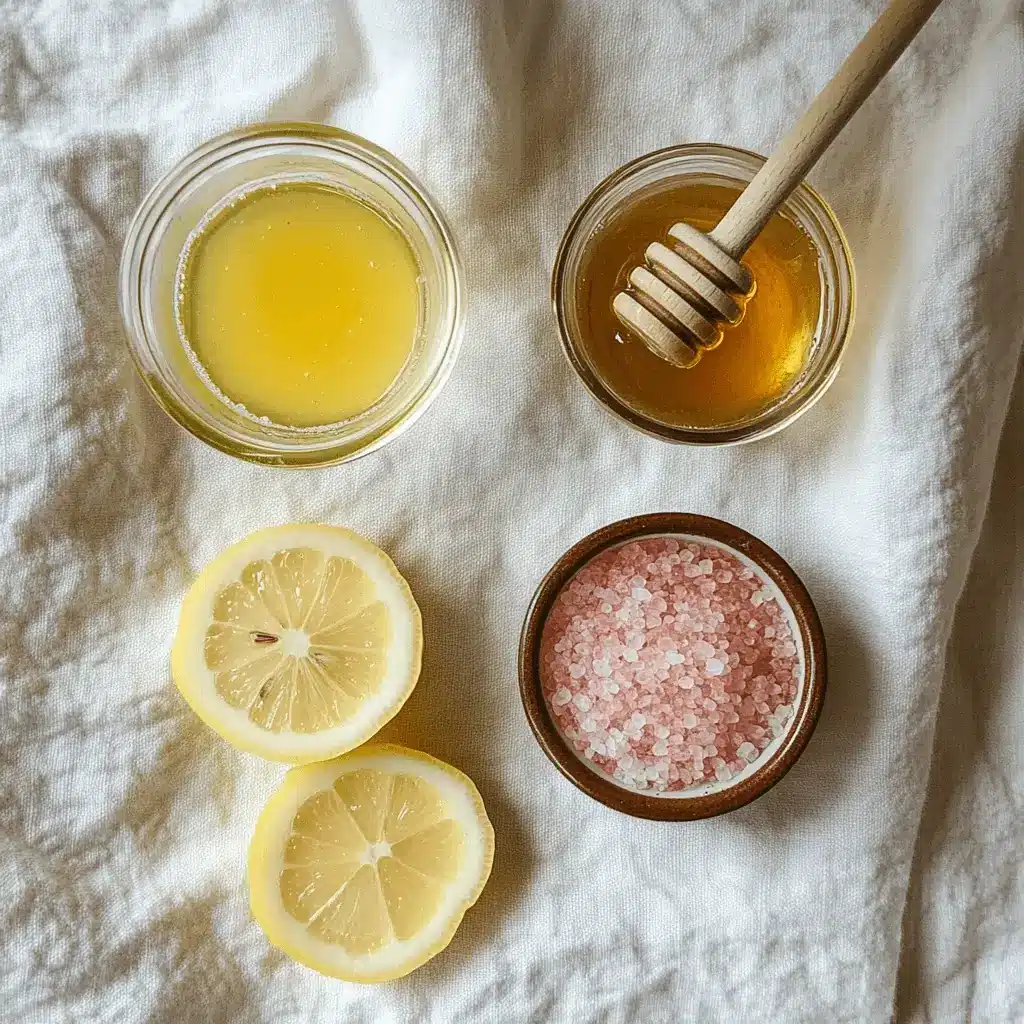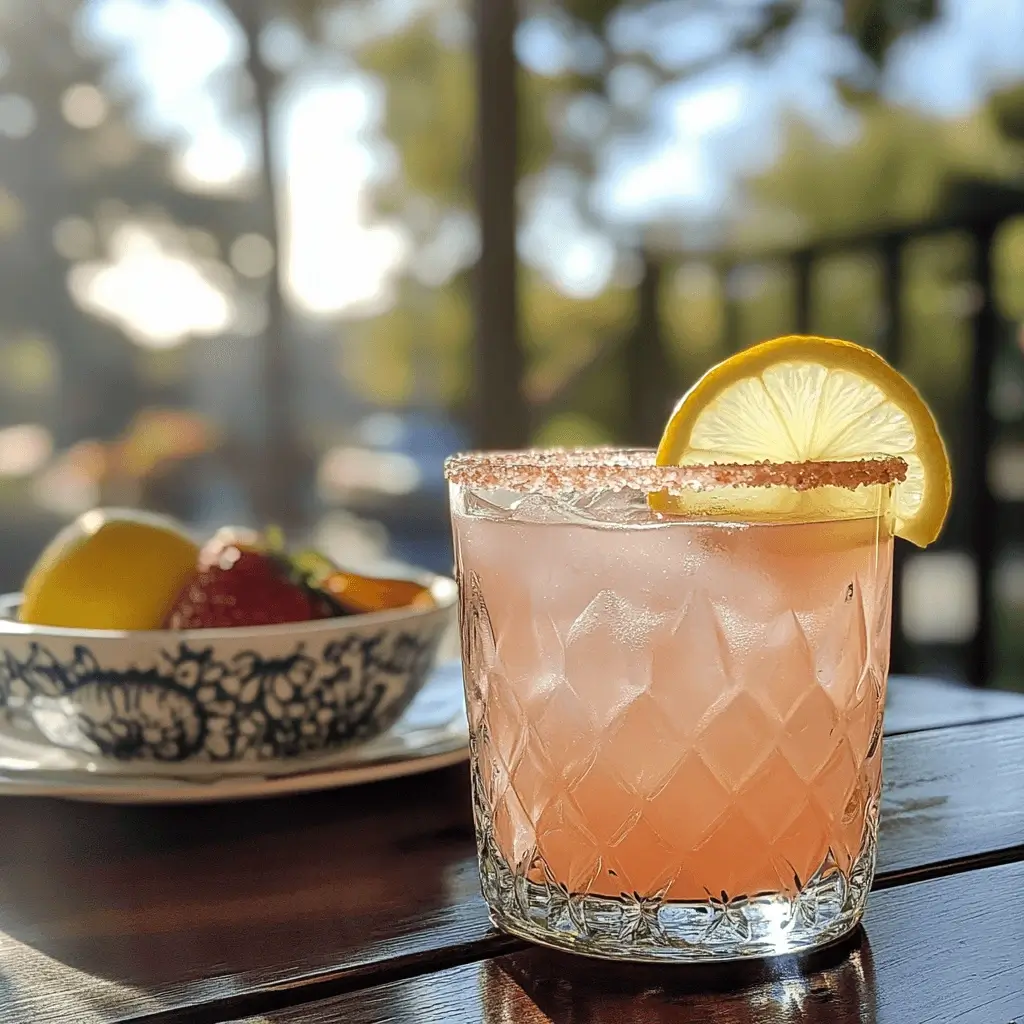Pink salt is everywhere—from your pantry to your TikTok feed—but does it actually live up to the hype? In this article, we’ll break down pink salt recipe reviews, spotlight the buzzed-about 4-ingredient trick, and sort truth from trend. We’ll also explore whether pink salt really works, which Himalayan salt brands are most trusted, and how to spot the real stuff. Whether you’re a health-conscious cook or a curious skeptic, you’ll find practical insights to help you make smarter decisions in the kitchen. Let’s dig in and see what’s actually worth your salt.
Exploring Pink Salt Recipes: Reviews & My Kitchen Story
A Southern Kitchen’s First Encounter with Pink Salt
I still remember the first time I saw Himalayan pink salt. It wasn’t in a fancy shop—it was at a roadside farm stand near the Blue Ridge Mountains. A tall mason jar full of blushing crystals caught my eye. “Healthier than table salt,” the vendor said. Skeptical but curious, I bought it. That night, I used it in my go-to roast chicken rub. I didn’t expect a revelation, but the flavor was different—rounder, cleaner, somehow more balanced. That moment sparked my love for what I now know is more than just pretty salt.
Growing up in rural Virginia, we cooked with what we had. My mom used iodized salt and cooked by feel. But pink salt offered a subtle upgrade that felt in tune with my kitchen values: simple, soulful, and local where possible. Since then, I’ve tried dozens of pink salt recipes, from quick-pickled onions to cast iron seared steak. This article collects the most honest pink salt recipe reviews I’ve gathered—what actually works, what’s just noise, and where the benefits begin and end.
Print
Pink Salt Morning Hydration Mix
- Total Time: 2 minutes
- Yield: 1 serving 1x
Description
Start your day the clean way with this Pink Salt Morning Hydration Mix. Made with just four natural ingredients—Himalayan pink salt, fresh lemon juice, raw honey, and warm filtered water—this simple wellness drink supports hydration and digestion first thing in the morning. It’s quick to make, easy to sip, and perfect for anyone looking to add a healthy ritual to their daily routine. Ideal for clean eating, wellness-focused lifestyles, or anyone wanting a gentle, mineral-rich alternative to sugary drinks. Refreshing, subtle, and naturally energizing.
Ingredients
¼ teaspoon Himalayan pink salt
1 teaspoon raw honey
1 tablespoon fresh lemon juice (or apple cider vinegar)
8 fluid ounces of warm, filtered water
Instructions
Combine the warm water and lemon juice in a glass.
Add honey and pink salt.
Stir until fully dissolved.
Drink immediately, preferably on an empty stomach.
Notes
Choose high-quality, non-iodized Himalayan pink salt for best results.
Limit to one serving per day—avoid overuse.
For added flavor, consider mixing in grated ginger or a dash of cinnamon.
- Prep Time: 2 minutes
- Cook Time: 0 minutes
- Category: Drink
- Method: Stirred
- Cuisine: Wellness
Nutrition
- Serving Size: 1 Cup
- Calories: 25 kcal
- Sugar: 5 g
- Sodium: 300 mg
- Fat: 0 g
- Saturated Fat: 0 g
- Unsaturated Fat: 0 g
- Trans Fat: 0 g
- Carbohydrates: 7 g
- Fiber: 0 g
- Protein: 0 g
- Cholesterol: 0 mg
Why Pink Salt Recipe Reviews Matter
The rise of pink salt in cooking circles is often accompanied by bold health claims and wellness trends. But let’s be real—does Himalayan pink salt truly outperform regular salt in recipes? Online reviews of pink salt recipes vary widely, from highly enthusiastic to openly skeptical.. That’s why I’ve compiled first-hand cooking tests and honest insights, not marketing fluff. From seasoning performance to ingredient interactions, these reviews aim to cut through the wellness noise and offer kitchen-tested clarity. (Try my version in this pickled cucumber recipe and see the difference for yourself.)
The Pink Salt Trick & Does It Really Work?

What Is the 4 Ingredient Pink Salt Trick?
Let’s explore the popular ‘4-ingredient pink salt method’ making waves across health blogs and social media. It typically includes Himalayan pink salt, freshly squeezed lemon juice, raw honey, and warm water. Some variations use apple cider vinegar instead of lemon, or include ginger for added flavor and benefits. The promise? Improved digestion, hydration, and natural detox. But what does the science—and the stove—say?
From a cook’s perspective, the combo is simple but satisfying. I tried it first thing one morning before prepping a homemade buttermilk biscuit breakfast. Flavor-wise, it’s a tangy-sweet tonic with a slight minerality from the pink salt. It’s refreshing, especially on an empty stomach. Do I think it cured anything? No. But it did make hydration easier for someone like me who forgets to drink water until noon.
The key here is balance. When used wisely, pink salt adds trace minerals and flavor without overwhelming your system. It’s not a magic pill—but if a daily morning glass helps you stay hydrated and feel grounded, there’s value in that.
Does Pink Salt Really Work?
Let’s be clear: pink salt is salt. It boasts around 84 trace minerals—such as magnesium, potassium, and calcium—that offer a modest advantage over standard table salt.. But the differences are marginal unless you’re consuming it in large amounts—which we shouldn’t be doing anyway.
In my cooking, pink salt shines in dishes where mineral notes elevate flavor—like in slow-roasted meats or fermented vegetables. It performs well in rubs, pickles, and even baked goods like sourdough crackers. Does it lower blood pressure or detox your organs? No. But it’s a clean, natural salt with a softer flavor profile that many home cooks—including myself—appreciate.
Stay tuned as we dive into which Himalayan salt brands are actually worth your money in the next section.
People have mixed feelings about pink salt recipes—some love them, others aren’t so sure.
rusted Himalayan Salt Brands & How to Spot the Real Deal (300 words)
What Is the Most Trusted Himalayan Salt Company?
With dozens of brands claiming to sell “pure” Himalayan salt, it’s hard to know who to trust. After testing several in everyday recipes like grilled corn, bone broth, and cast iron chicken thighs, a few clear winners emerged.

The Spice Lab consistently offered fine grind salt with balanced flavor and no clumping. Their use of salt sourced directly from the Khewra mines in Pakistan—the original source of Himalayan salt—ensures authenticity. SaltWorks’ Ancient Ocean® Himalayan Salt also stands out for purity and packaging transparency. If you’re buying in bulk, Sherpa Pink is another reputable brand that offers good pricing and consistent grain texture.
As a home cook, I notice how salt performs in high-moisture dishes like southern tomato gravy. Quality pink salt dissolves cleanly and doesn’t leave residue or odd aftertastes. If a brand cuts corners or blends in cheaper minerals, your food will tell you.
How Can You Tell If Himalayan Pink Salt Is Pure?
Real pink salt should be dry, mineral-rich, and slightly coarse with varying hues of pale pink to deep rose. If it’s too white or uniform, it might be overly refined—or not Himalayan at all.Authentic pink salt is mined in the Punjab region of Pakistan, so always check the label for its source.
Honest Reviews & Best Uses in the Kitchen
Top Pink Salt Recipes That Actually Work
After years of cooking with pink salt in real Southern and globally inspired dishes, I’ve narrowed down the recipes where it truly shines. It’s not just hype—it performs best where subtle salt notes matter most. In my fermented green beans, pink salt keeps the brine clean-tasting and helps the veggies maintain crunch. In slow-cooked collards, it enhances flavor without overpowering the greens.
I also love it in sweet-savory applications. Trust me, just a pinch on dark chocolate bark or fresh watermelon takes the flavor to a whole new level. Compared to table salt, pink salt has a softer edge, making it perfect for finishing dishes or seasoning more delicate items like seafood or homemade butter.
What Real Reviewers Are Saying
Reviews of pink salt recipes across forums and food blogs reveal a blend of excitement and skepticism. Home cooks on reputable culinary sites appreciate its pure flavor, smooth grind, and rich trace mineral content. Many mention switching to it for both cooking and finishing dishes like avocado toast or grilled asparagus.
However, reviewers also point out something important: pink salt doesn’t perform magic. It won’t replace a healthy diet or cure ailments. Some warn that wellness trends tend to exaggerate its benefits. But as one reviewer wrote, “It’s just better salt—and that’s enough.”
In my backyard classes, students often ask if it’s worth the switch. My answer? If you’re already conscious about ingredients and flavor, yes. But don’t throw out your table salt just yet—it still works fine for boiling pasta or baking. Think of pink salt as an upgrade for dishes where you taste every crystal.

Frequently Asked Questions (FAQs)
The “4-ingredient pink salt trick” refers to a mix of Himalayan pink salt, lemon juice, honey, and warm water. It’s often consumed first thing in the morning and claimed to aid digestion, hydration, and natural detox. While it’s refreshing and flavorful, there’s no clinical evidence to support major health transformations. It works as a hydration support, not a cure-all.
If by “work” we mean outperforming table salt in health benefits, the answer is mixed. Pink salt contains trace minerals like magnesium and potassium, which contribute to its taste and slight nutritional edge. But the difference is minimal in small quantities. It’s a natural, flavorful salt—great in cooking but not a miracle product.
Brands like The Spice Lab, SaltWorks’ Ancient Ocean®, and Sherpa Pink are often reviewed as reliable, high-quality sources of Himalayan pink salt. They offer clear origin labeling, minimal processing, and consistent texture—all key when choosing a trustworthy pink salt brand for kitchen use.
True Himalayan pink salt should come from the Khewra mines in Pakistan and feature a variety of pink hues. It should not be too white or uniform, which may indicate over-processing. Purity indicators include no additives, a dry coarse texture, and clear origin on the label. Check color, source, and ingredient list to verify authenticity.
Conclusion
Pink salt isn’t just a trendy mineral it’s a versatile ingredient that’s earned a place in my rustic Southern kitchen. From the tang of fermented veggies to the finish on grilled meats, its subtle minerality adds real value to the plate. The reviews are clear: it’s no cure-all, but it is good salt. Whether you’re trying the 4-ingredient trick or just want to elevate your everyday seasoning, pink salt delivers where it counts—flavor, texture, and clean sourcing. And sometimes, that’s exactly what a home cook needs.


1 thought on “The Truth About Pink Salt: Benefits, Recipes, and Brand Reviews”
Comments are closed.